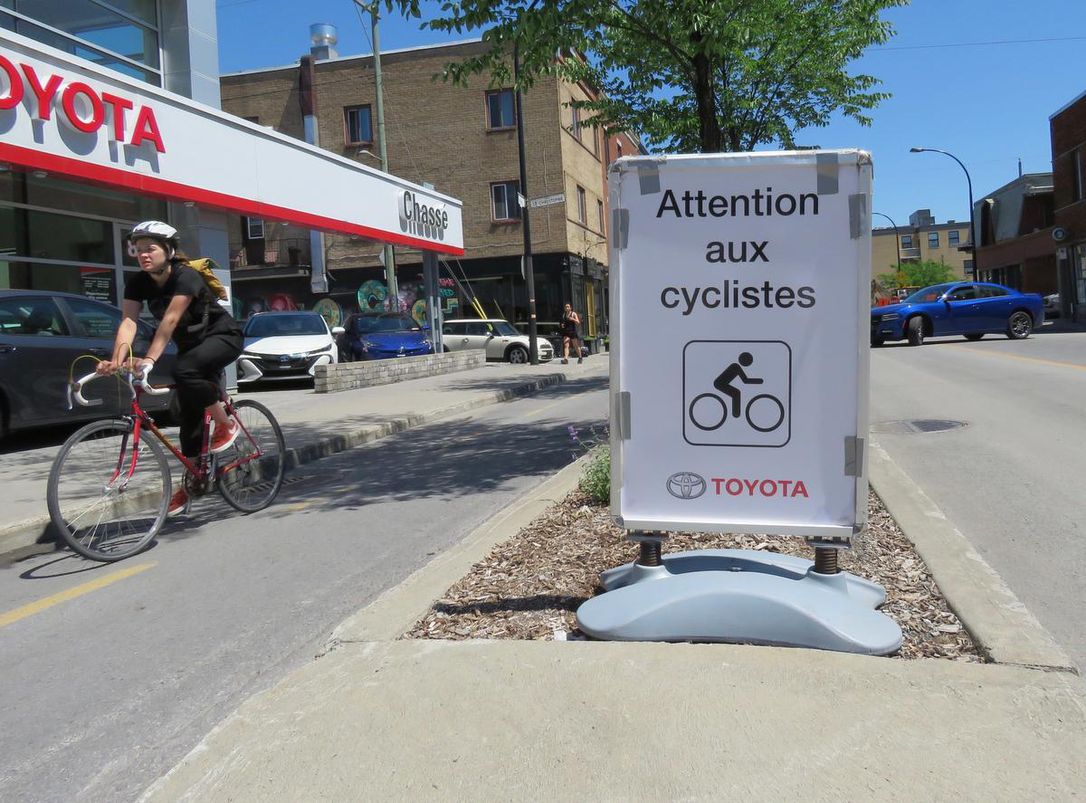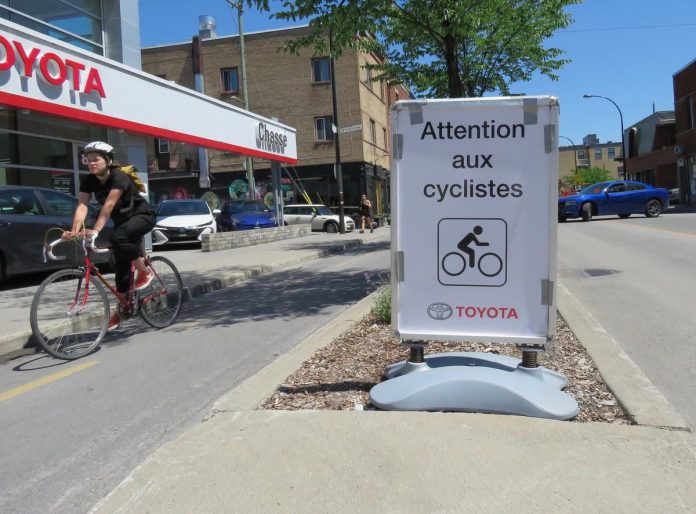[ad_1]
MONTREAL—While other Canadian cities debate dedicated cycling lanes, Montreal is planning highways for its many residents who get around on a bike.
Such is the distance that lies between a city like Toronto, which has suffered nearly 100 cycling and pedestrian deaths two years after adopting the Vision Zero plan to eliminate fatalities entirely, and Montreal, where such incidents are extremely rare.

“In Montreal, we started 35 or 40 years ago thinking about these things —about having cycling lanes, about educating cyclists,” said Suzanne Lareau, president of Vélo-Québec, a Montreal-based cycling advocay organization. “You can’t start this and expect to have immediate results.”
Vélo-Québec was hired by Toronto two years ago to conduct a study of cycling activity and help the city plan its bike network. It is coming to the end of an identical study of bike use in Montreal’s downtown core, which will be used to expand and improve upon the city’s existing network.
“We have a good lead, but the other cities are starting to pedal hard,” Lareau said. “Toronto is working hard to set up a cycling network. Vancouver, Edmonton, Calgary — they’re very busy.”
According to the Montreal police, there were 15 pedestrian deaths in the city in each of 2016 and 2017. There were two cycling deaths in 2016, four in 2017 and two people have been killed while riding bicycles so far in 2018.
The statistics are better than many big North American cities, but still Montrealers elected a new mayor last November for whom improving cycling and pedestrian safety was a major policy plank.
Valérie Plante’s municipal party, Projet Montréal, seized on the fact that the toll of cyclists and pedestrians killed had increased from 14 in 2015 to 17 in 2016, the same year that the city had signed onto the Vision Zero plan.
“It was an announcement that hadn’t been prepared and was not followed up immediately with any concrete actions,” said Marianne Giguère, a Montreal city councillor responsible for sustainable development and active transportation on Plante’s executive committee.
Now the administration is revising its Vision Zero actions with the goal of turning a city already seen as a mecca of cycling in Canada into something that is downright Scandinavian.
In its first few months, the Plante administration has started the work of turning two pothole-riddled residential streets into north-south “vélorues” where bikes will have priority over vehicle traffic. A major midtown east-west artery is also being stripped of its parking spots on one side to make way for bike lanes and a major protected lane that cuts across the downtown core is being extended.
But Plante’s attention-grabbing election promise last fall was to create bicycle highways that will allow cyclists to traverse the city in any direction, as quickly or slowly as they wish, without coming into contact with potentially lethal cars and trucks.
“We have shared lanes, dedicated cycling lanes and protected lanes,” Giguère said. “Now we want to go further in adding what would be the equivalent of a subway in the transportation network.
“Routes that are made for saving time, moving quickly without having to stop at every intersection, where there is enough space for those that are faster and those that are slower to share the space comfortably.”
Montreal’s strong cycling culture isn’t an organic phenomenon, but the result of a vigilant community with a strong activist culture. Lareau said the history of cycling in the city dates to the oil crisis in the 1970s, when prices spiked and people needed a cheaper way to get around.
Around the same time, a group of artists and activists, calling themselves Le Monde à bicyclette, led the charge for cyclists’ rights in the city with often elaborate demonstrations. They painted the roads with unauthorized bike lanes, protested at the annual auto show, fought for the right to allow bikes on the subway, and to pedal across the bridges connecting Montreal to its southern suburbs.
Vélo-Québec, which was then a cycling tourism organization, started developing the technical expertise necessary to help cities make their streets more bike friendly.
The provincial and municipal governments over the years have varied in their enthusiasm for cyclists, but that activist outrage and on-hand expertise has been constant.
When a 33-year-old Mathilde Blais was killed by a truck in April 2014 while cycling through a busy underpass deemed a “tunnel of death,” the neighbourhood mayor bucked the provincial traffic regulations and decreed that bikes in that area could ride on the sidewalks with pedestrians.
When an 18-year-old cyclist, Clément Ouimet, was struck and killed in October 2017 by a car making a U-turn on the road leading to the top of Mount Royal, the summit overlooking the city, Plante promised strong action if she was elected.
She followed through with a controversial pilot project that started this month and will run through to October to prevent vehicles from using Camillien-Houde Way as a short cut to get from one end of the city to the other. Cars can still go up, but they descend in the same direction.
Lareau said the move is a good start, but noted that advocates had been pushing for the road to be closed to thru-traffic for nearly two decades.
“For sure, the death of Clément Ouimet pushed the matter to the forefront,” she said. “Even here it’s crisis management.”
TOP STORIES, DELIVERED TO YOUR INBOX.
[ad_2]








